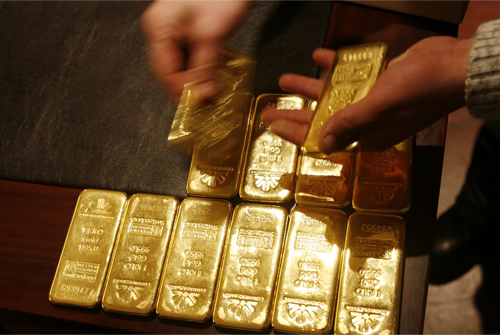
Gold has been a valuable and sought-after precious metal for centuries. Whether you have inherited gold jewelry, have gold coins or bars, or are simply curious about the worth of your gold items, determining their value is an important step. Several factors come into play when evaluating the worth of gold, including its purity, weight, current market price, and additional considerations. In this article, we will explore these factors in detail to help you understand how much your gold is worth.
The purity of gold is a crucial determinant of its value. Gold is often measured in karats, which indicate the proportion of pure gold in an item. The karat system uses 24 as the base, with 24 karat gold being 99.99% pure gold. Here’s a breakdown of the most common gold purities:
24 Karat (24K) gold is considered the purest form of gold, containing 99.9% pure gold.
22 Karat (22K) gold is 91.7% pure gold.
18 Karat (18K) gold is 75% pure gold.
14 Karat (14K) gold is 58.3% pure gold.
10 Karat (10K) gold is 41.7% pure gold.
The higher the karat, the higher the gold content and subsequently the higher the value. When assessing the worth of your gold, consider its purity as a starting point.
Gold Weight and Measurement:
The weight of your gold is another crucial factor in determining its worth. Gold is typically measured in troy ounces, with 1 troy ounce equal to 31.1 grams. Smaller units such as grams, pennyweights, or grains are also used for more precise measurements.
To calculate the value of your gold based on weight, you’ll need to know the weight of your gold item in troy ounces or a smaller unit. Precise weighing is important, and it is recommended to use a calibrated scale or have your gold weighed by a professional.
Current Market Price:
Gold prices fluctuate daily due to various factors such as economic conditions, investor sentiment, and geopolitical events. It’s important to stay updated on the current market price of gold to get an accurate estimate of your gold’s worth. The market price of gold is typically quoted per troy ounce.
Several financial news outlets, websites, and precious metal exchanges provide real-time gold price information. You can also consult with reputable gold dealers or jewelers who can provide insights into the current market price and its impact on the value of your gold.
Additional Considerations:
Beyond purity, weight, and market price, there are additional factors that can influence the value of your gold:
Jewelry Design and Condition: Intricate or unique jewelry designs, brand names, or antique pieces may hold additional value beyond the gold content. The condition of your jewelry, including any wear, damage, or missing components, can also affect its worth.
Rarity and Collectibility: Certain gold coins or bars may have added value due to their rarity, historical significance, or collectibility. Factors such as limited mintage, specific mint marks, or special editions can impact their worth.
Certification and Authenticity: If you possess rare or valuable gold coins or bars, having them certified by a reputable grading service can enhance their value. Certification provides assurance of authenticity and verifies the quality and condition of the item.
Determining the worth of your gold requires evaluating its purity, weight, current market price, and additional considerations such as jewelry design, rarity, and authenticity. Keep in mind that the value of gold can fluctuate, so it’s advisable to get a current assessment when you’re ready to sell. To ensure a fair and accurate evaluation, consult reputable gold dealers, jewelers, or professional appraisers who can guide you through the process. Understanding the factors that contribute to the value of your gold will help you make informed decisions and maximize the potential worth of your precious metal possessions.